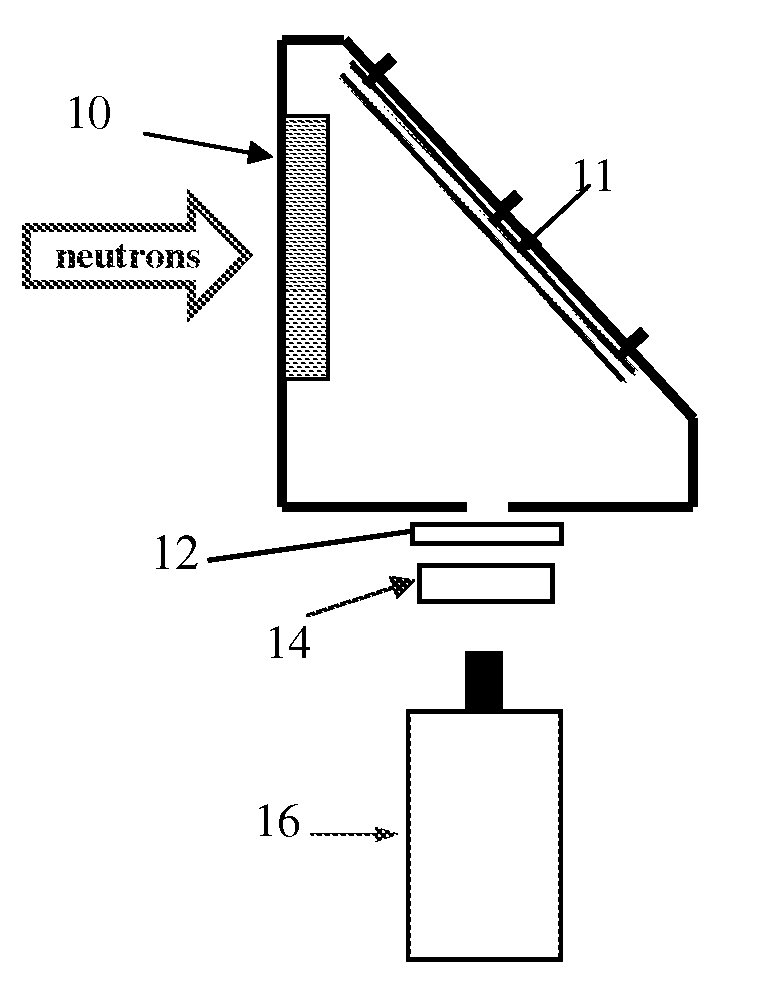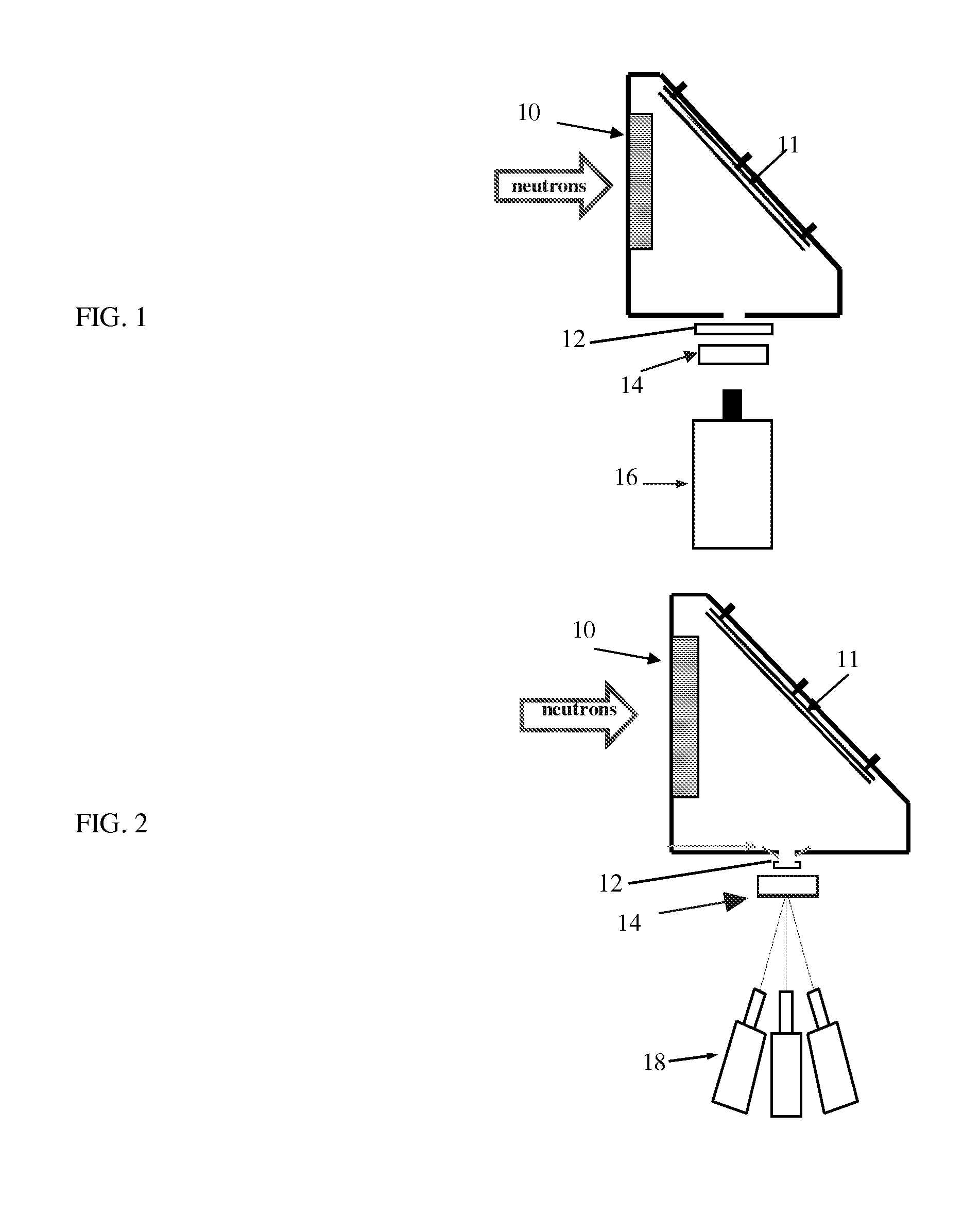Time-resolved, optical-readout detector for neutron and gamma-ray imaging
a detector and optical readout technology, applied in the field of time-resolved, optical readout detector for neutron and gamma-ray imaging, can solve the problems of slow scintillator zns, unsuitable for fast timing applications, and difficult implementation of fast-neutron-based imaging techniques, etc., to achieve enhanced image contrast and improved discrimination against scattered neutrons
- Summary
- Abstract
- Description
- Claims
- Application Information
AI Technical Summary
Benefits of technology
Problems solved by technology
Method used
Image
Examples
Embodiment Construction
[0042]The TRION neutron imaging detector and readout system of the present invention may comprise stroboscopic photography of neutrons arriving at the detector on a few-nanosecond time-scale.
[0043]Although stroboscopic time-resolved optical imaging techniques have previously been used to determine various physical properties, no time-resolved neutron imaging has yet been proposed. Furthermore, TRION comprises the capability for sequential integration of neutron transmission images at different neutron energies obtained with a pulsed, broad-energy neutron beam.
[0044]In a typical pulsed fast-neutron beam the burst repetition rate is of the order of 2 MHz (much higher rates are not achievable due to frame overlap, i.e. slow neutrons from the preceding pulse overlap in time with fast ones from the present pulse). Within the time window of ˜500 ns, depending on the distance between neutron-source and detector and the width of the relevant energy bin, the detector should integrate neutron...
PUM
 Login to View More
Login to View More Abstract
Description
Claims
Application Information
 Login to View More
Login to View More - R&D
- Intellectual Property
- Life Sciences
- Materials
- Tech Scout
- Unparalleled Data Quality
- Higher Quality Content
- 60% Fewer Hallucinations
Browse by: Latest US Patents, China's latest patents, Technical Efficacy Thesaurus, Application Domain, Technology Topic, Popular Technical Reports.
© 2025 PatSnap. All rights reserved.Legal|Privacy policy|Modern Slavery Act Transparency Statement|Sitemap|About US| Contact US: help@patsnap.com



